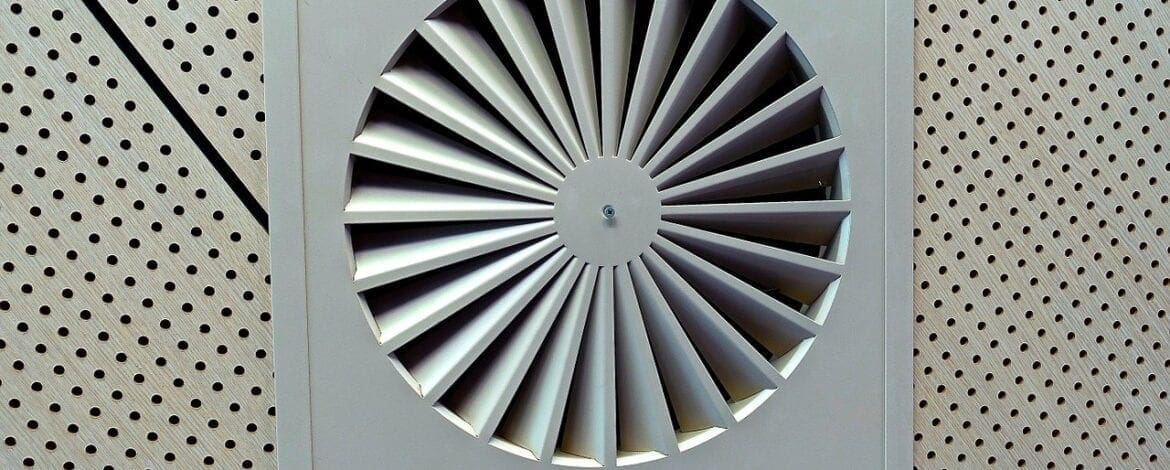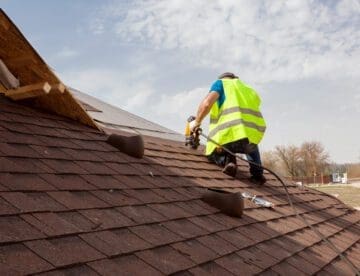Your bathroom, much like your kitchen, tends to hold a lot of moisture. This isn’t a problem in most houses, as long as the moisture and odors are vented outside. But some houses have poorly-designed venting systems that make it impossible to vent the moisture and steam from the bathroom to the exterior. In such cases, these homes often have a bathroom fan that doesn’t vent outside and instead, pumps the moisture into the home’s upper floors.
Running your bathroom fans into the home’s upper floors or attic isn’t the best idea. It can lead to excessive condensation and moisture, which can cause mold and mildew. For these reasons, it’s crucial to have a properly-installed bathroom vent solution to keep your family safe and healthy. So, what can you do if your bathroom fan doesn’t vent outside? Continue reading to learn how to improve the ventilation in your home.
What happens when you vent to the attic?
Venting through the attic is a shortcut solution less-experienced contractors will sometimes use. There are certainly worse options than venting through your attic. But you should still always try to avoid resolving your ventilation problems this way.
One of the main reasons you should avoid venting to your attic is that it’s typically not insulated as well as the rest of your home. So, the temperature in the attic is always fairly close to the temperature outside. When the vented air comes in contact with the outdoor temperatures, it causes condensation. This is especially true during colder winter months.
As condensation accumulates on the wood rafters in your attic, they’ll begin to rot and become a potential safety hazard that can have profound implications. If left unchecked, the rotting rafters can compromise the structural integrity of your roof. Worst case scenario? The roof can collapse.
It takes only one snowy or rainy season for condensation and mold to show up. And, when you find mold in your attic, it may take a lot of time and effort to get rid of it and make sure it doesn’t come back again. Proper ventilation and adequate airflow will prevent these problems from happening.
What to do if your bathroom fan doesn’t vent outside
All of the above issues occur because of inadequate ventilation solutions. If your bathroom has a ventilation problem, there are a few unconventional, but still very effective ways of improving air circulation and ventilation. Let’s dive in.
Install Commercial Ductwork
If you have a larger house, the most suitable option would be installing commercial ductwork. This option is also a good solution for apartment buildings. It’s very convenient and can be used if you don’t want to fabricate several fans and long duct runs. Of course, such an installation is visible from the exterior. But, with a little effort and planning, it can be designed to be a positive aesthetic feature that adds to your house’s overall visual appearance.
Install a Vent under Your Floor to Reach the Exterior
If you’re facing one or all of these issues:
- It’s too difficult to install a recirculating fan
- You can’t feasibly adapt the existing ventilation system
- The bathroom is too far from the exterior wall to easily connect it to the external ductwork
Then you should consider installing a vent that will draw the air under the floor and to the outside. The best way to do this is to mount the fan high on the wall and connect it to a sturdy duct run made of PVC or rigid metal. If you decide to resolve your bathroom’s ventilation issues with this solution, make sure you get a strong enough fan. The fan needs to be more powerful than other traditional bathroom fans. It’ll have to overcome natural convection when pulling the air down and out.
Upgrade Your Attic Vent
It might not be feasible to install new ventilation solutions, and you’ll have to ventilate up and out through your attic. As we mentioned in the beginning, this should never be your top choice. However, if you must do this, the best way to ensure that your bathroom is moisture-free and your attic isn’t suffering from condensation is to upgrade your attic vents and fans.
Consider installing powered exhaust fans, which create an effect similar to that of a turbine and actively suck out the air. This differs from most venting solutions, which utilize passive ventilation.
Powered exhaust fans aren’t the most desirable solution. This is mainly because of the extra energy costs, especially if your attic isn’t properly sealed and insulated.
But, if you’ve run out of options, these fans can still prove very useful in sucking the moisture and steam out of your house. The best way to ensure optimal ventilation is to go by the following aspects:
- Consider any special features of your bathroom or attic
- Buy the right fan (in terms of both size and power)
- Keep the ducts as short and straight as you can
Don’t delay fixing a bathroom fan that doesn’t vent outside.
We hope these tips have helped you find effective ways to improve your bathroom ventilation. A key takeaway we would like you to remember is that proper ventilation is crucial if you want to ensure your household’s health and safety. Proper ventilation also safeguards your attic’s entire structural integrity, as it will be dry, well-ventilated, and strong enough to support the roof.
If you’ve already found mold or mildew in your attic, act quickly. Contact us today at 813-373-9088. Or fill out our online form, and we’ll help you asap.




